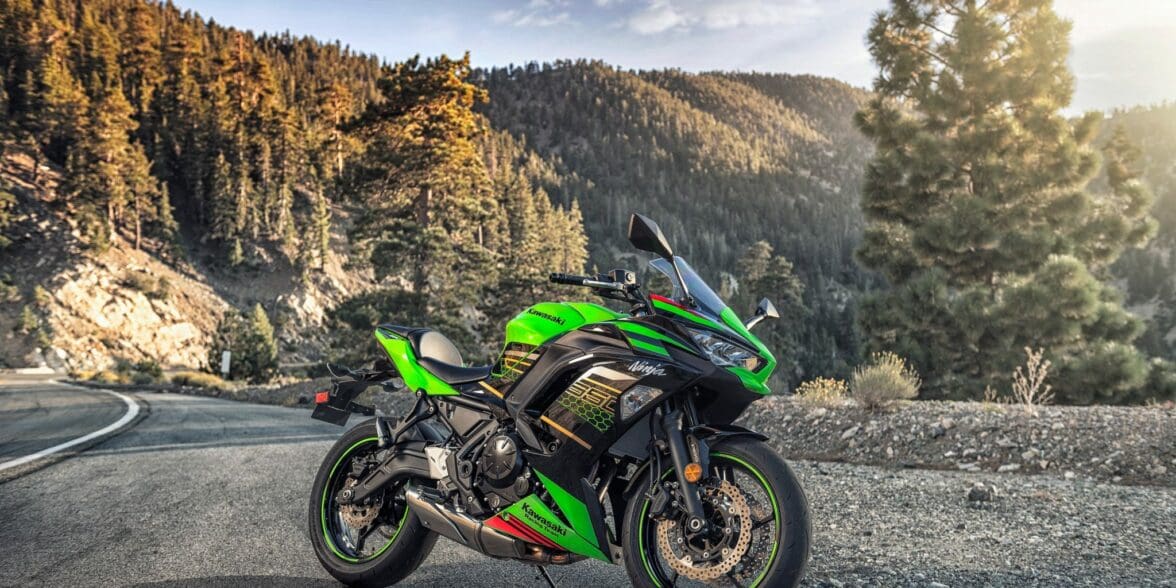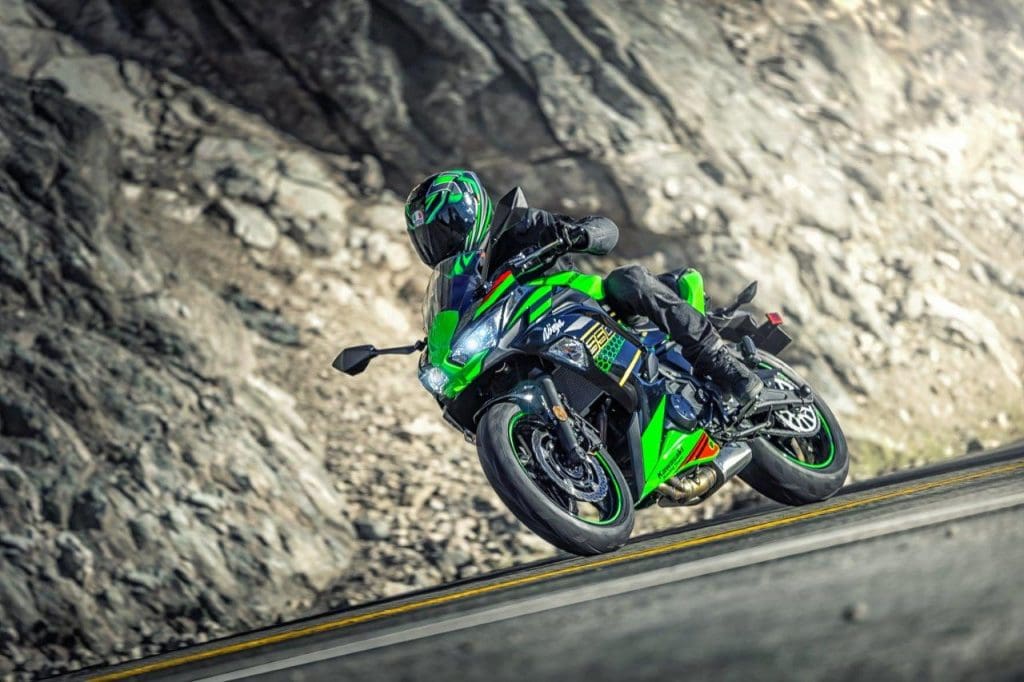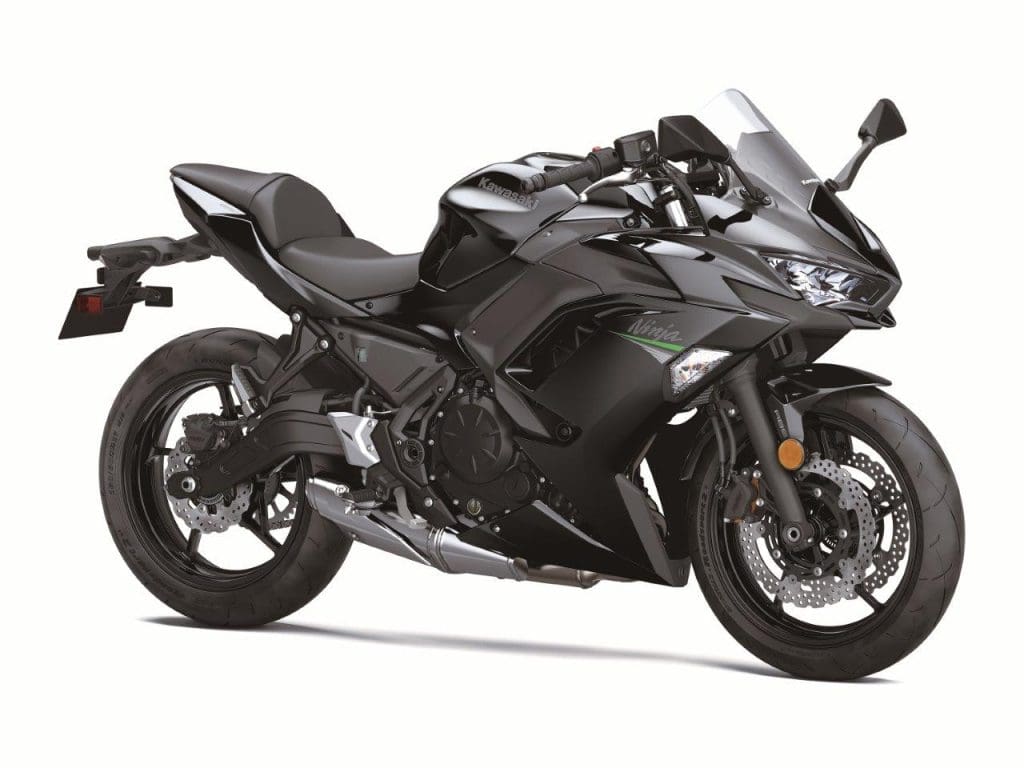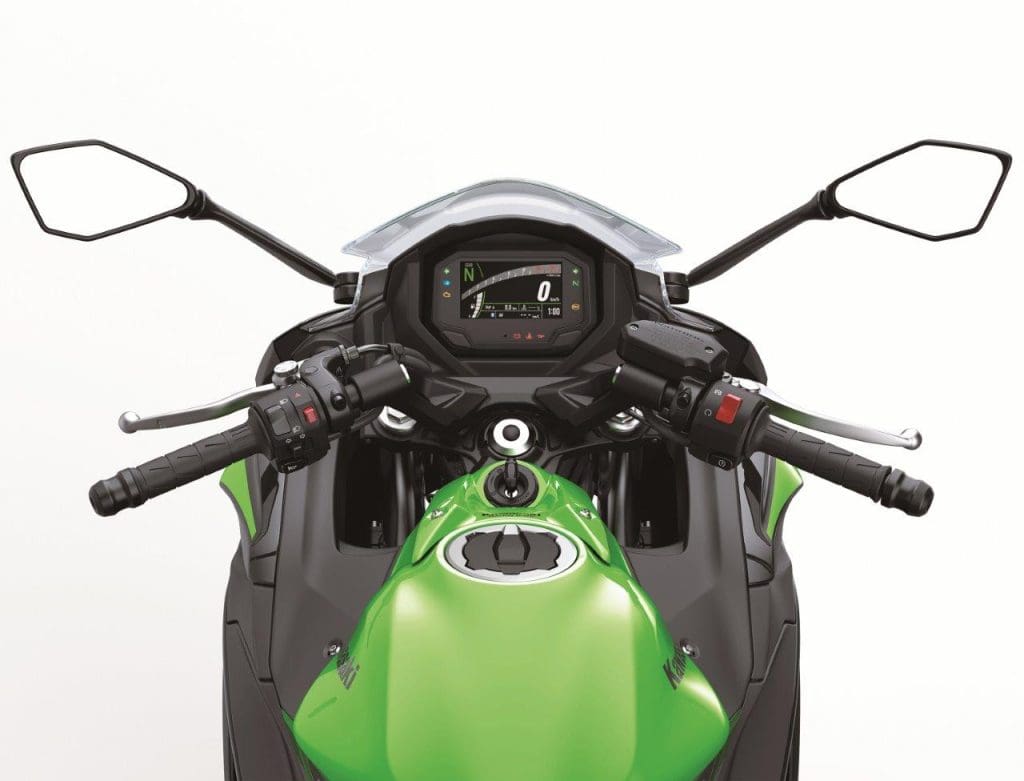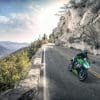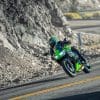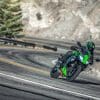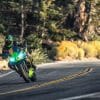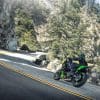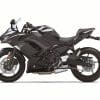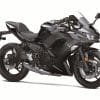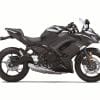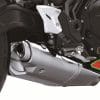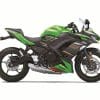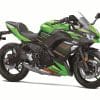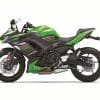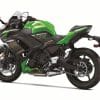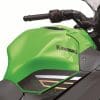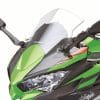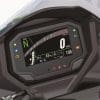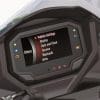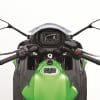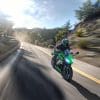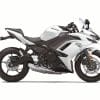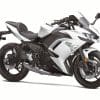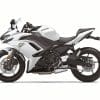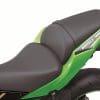2020 Kawasaki Ninja 650 & 650 KRT Edition
Contents
The 2020 Kawasaki Ninja 650 has been in production since 2006, although back then it was known as the 650R. Powered by a 649 cc DOHC parallel twin engine, the 650 produces 67 crank HP and 49 lbs-ft of crank torque. Much like its larger brother, the 1000 SX, the 650 is rated as both a sport bike and a sport tourer.
The 650 comes in 4 variations, the base 650, the 650 KRT Edition, the 650 ABS, and the 650 ABS KRT Edition. All four bikes share the same trellis steel frame, engine, power, and driver aids with the exception of the KRT editions having the Kawasaki Racing Team colors and decals, and the ABS models coming with ABS. As well, in Canada, only the ABS versions are available.
The 2020 Kawasaki Ninja 650 ABS starts at $7,799 US/$8,699 CA, with the non-ABS at $7,399 US, and the 2020 Kawasaki Ninja 650 ABS KRT Edition starts at $7,999 US/$8,899 CA, with the non-ABS at $7,599 US
On this page: we’ve curated specs, features, news, photos/videos, etc. so you can read up on the new Kawasaki Ninja 650 ABS, and the 650 ABS KRT in one place.
Model Overview
General Info
- Price: $7,999 US/$8,899 CA
- Key Features:
- Abs (Anti-lock Brake System)
- Assist & Slipper Clutch
- LED Lighting
Key Specs
- Engine type: 649cc, 4-stroke, Parallel Twin, DOHC, liquid-cooled
- Power: 67 Hp
- Wet weight: 423 lb
- Seat height: 31.1 in
Key Competitors
- Honda CBR650R
- Suzuki SV650 ABS
- BMW F800 GT
2020 Kawasaki Ninja 650 ABS KRT Specifications
ENGINE |
||
| Engine | 649cc, 4-stroke, Parallel Twin, DOHC, liquid-cooled | |
| Power | 67 Hp | |
| Bore x Stroke | 83.0mm x 60.0mm | |
| Compression Ratio | 10.8:1 | |
| Fuel System | DFI® with dual 36mm Keihin throttle bodies | |
| Starter | Electric | |
| Lubrication | Forced lubrication, wet sump with oil cooler | |
DRIVETRAIN |
||
| Clutch | Wet multi-disc, manual | |
| Transmission | 6-speed, return, dog-ring | |
| Final Drive | Sealed chain | |
CHASSIS |
||
| Suspension Front | 41mm hydraulic telescopic fork/4.9 in | |
| Suspension Rear | Horizontal back-link with adjustable spring preload/5.1 in | |
| Brakes Front | Dual 300mm petal-type discs and 2-piston calipers and ABS | |
| Brakes Rear |
Single 220mm petal-type disc and single-piston caliper and ABS
|
|
| Tires Front | 120/70×17 | |
| Tires Rear | 160/60×17 | |
| Fuel Tank Capacity | 15 L (4 US gal.) | |
| Color | Lime Green/Ebony | |
ELECTRICAL |
||
| Ignition | TCBI with digital advance | |
| Spark Plugs | ||
| Headlight | LED | |
| Tail Light | LED | |
DIMENSIONS |
||
| Overall Length | 80.9 in (2,054 mm) | |
| Overall Width | 29.1 in (740 mm) | |
| Overall Height | 45.1 in (1,145 mm) | |
| Wheelbase | 55.5 in (1,410mm) | |
| Ground Clearance | 5.1 in (130 mm) | |
| Seat Height | 31.1 in (790 mm) | |
| Curb Weight | 423 lbs (192 kg) | |
WARRANTY |
||
| Warranty | 12 Month Limited Warranty | |
| Extension | ||
2020 Kawasaki Ninja 650 ABS and 650 ABS KRT Features
Assist & Slipper Clutch
Based on feedback from racing activities, the Assist & Slipper Clutch uses two types of cams (an assist cam and a slipper cam) to either drive the clutch hub and operating plate together or apart.
Under normal operation, the assist cam functions as a self-servo mechanism, pulling the clutch hub and operating plate together to compress the clutch plates. This allows the total clutch spring load to be reduced, resulting in a lighter clutch lever feel when operating the clutch.
When excessive engine braking occurs – as a result of quick downshifts (or an accidental downshift) – the slipper cam comes into play, forcing the clutch hub and operating plate apart. This relieves pressure on the clutch plates to reduce back-torque and helps prevent the rear tire from hopping and skidding. This race-style function is particularly useful when sport or track riding.
Economical Riding Indicator
Using high-precision electronic control for engine management, Kawasaki models can achieve a high level of fuel efficiency. However, fuel consumption is greatly affected by throttle use, gear selection, and other elements under the rider’s control. The Economical Riding Indicator is a function that indicates when current riding conditions are consuming a low amount of fuel. The system continuously monitors fuel consumption, regardless of vehicle speed, engine speed, throttle position and other riding conditions. When fuel consumption is low for a given speed (i.e. fuel efficiency is high), an “ECO” mark appears on the instrument panel’s LCD screen. By riding so that the “ECO” mark remains on, fuel consumption can be reduced.
While effective vehicle speed and engine speed may vary by model, paying attention to conditions that cause the “ECO” mark to appear can help riders improve their fuel efficiency – a handy way to increase cruising range. Further, keeping fuel consumption low also helps minimize negative impact on the environment.
Dual Throttle Valves
Late-model sport bikes often use large-bore throttle bodies to generate high levels of power. However, with large diameter throttles, when a rider suddenly opens the throttle, the unrestricted torque response can be strong. Dual throttle valve technology was designed to tame engine response while contributing to performance.
On models with dual throttle valves, there are two throttle valves per cylinder: in addition to the main valves, which are physically linked to the throttle grip and controlled by the rider, a second set of valves, opened and closed by the ECU, precisely regulates intake airflow to ensure a natural, linear response. With the air passing through the throttle bodies becoming smoother, combustion efficiency is improved and power is increased.
ABS (Anti-lock Brake System)
Kawasaki ABS systems use front and rear wheel sensors to constantly monitor wheel speed. Should information from either of the sensors indicate that wheel lock has occurred, the ABS ECU directs the pump in the ABS unit to modulate brake fluid pressure (releasing and reapplying pressure so that traction can be regained) until normal operation resumes. ABS offers rider reassurance that contributes to greater riding enjoyment.
Horizontal Back-link Rear Suspension
Compared to the Kawasaki traditional Uni-Trak® rear suspension, which mounts the shock unit vertically, with Horizontal Back-link Rear Suspension, the shock unit is almost horizontal. The original Kawasaki suspension arrangement locates the shock unit very close to the bike’s center of gravity, greatly contributing to mass centralization. And because there is no linkage or shock unit protruding beneath the swingarm, this frees up space for a larger exhaust pre-chamber (an exhaust expansion chamber situated just upstream of the silencer). With a larger pre-chamber, silencer volume can be reduced, and heavy exhaust components can be concentrated closer to the center of the bike, further contributing to mass centralization. The result is greatly improved handling.
A secondary benefit is that the shock unit is placed far away from exhaust heat. Because it is more difficult for heat from the exhaust system to adversely affect suspension oil and gas pressure, suspension performance is more consistent.
2020 Kawasaki Ninja 650 ABS and 650 ABS KRT Photos
2020 Kawasaki Ninja 650 ABS and 650 ABS KRT Videos
Links
Kawasaki Official Websites


